Project Description
Introduction
Blue Corn Comics, a publisher of Native American-themed comic books, proposes to create a "graphic novel" formatted in the [tribal] language for the [Tribe]. A graphic novel is a collection of comic-book stories in a trade paperback format. This particular work would contain illustrated comic-book stories, prose stories, and other text features.
Blue Corn Comics is an experienced producer of comics, and has already published the first two volumes of PEACE PARTY, a multicultural comic book featuring Native Americans. The company plans to publish PEACE PARTY and other series as graphic novels. This [tribal] graphic novel would be part of that series—the first of several volumes done in Native languages.
Purpose
Why produce comic-book stories in the [tribal] language? At present, most Native-language materials are instructional in nature. Those that are fiction are simple stories geared toward younger children. Few Native-language works are written for teens and young adults.
These are the very people who are drifting away from their tribal language...who are difficult to reach...and who have given up on reading. A generation of Native youth is at risk of losing their heritage forever. To restart or reinforce the language habit, they need something compelling to read.
Comic books are one way of offering that. Children perceive them as accessible and easy to read—the pictures help explain the words. The typical comic-book story is lively and fast-paced, with lots of action. A [tribal] comic will present the language as a living, breathing instrument, not something relegated to instruction manuals and official meetings.
Comics also have cachet these days, since they're being made into so many movies and TV shows. There's a good chance kids will perceive comics about [tribal] characters, in the [tribal] language, as "cool." (For more on this subject, see the enclosed "Need for the Project.")
Contents
The proposed graphic novel will have several comic-book stories. The possibilities include traditional stories and legends; historical accounts about key events and figures, modern-day stories that address political and social issues (e.g., hunting and fishing rights, mining); and fantasy stories about [tribal] heroes or "superheroes."
Accompanying these will be articles, essays, and illustrations of a complementary nature. They'll reinforce the idea of the [tribal] language and culture as thriving entities worth knowing, honoring, and preserving.
Format
The trade paperback format is desirable for several reasons. The product will stand up to use in schools and libraries much longer than a flimsy magazine. Students, parents, and teachers will perceive it as more serious and worthy than a comic book. They'll keep it longer and use it more.
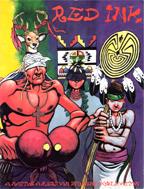
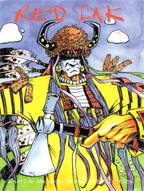
The primary set of stories will be in the [tribal] language. The parties also will produce an English-language version in a format to be decided. It may be part of the main book (perhaps an appendix), a separate volume (perhaps an inexpensive newsprint publication), or on computer (a CD-ROM or DVD). Besides the trade paperback, the [Tribe's] language and cultural preservation group will have the right to produce the work in other formats—as CD-ROMs, radio broadcasts, etc.
Procedure
Blue Corn Comics will work closely with the [Tribe's] language and cultural preservation group. These advisors will help select stories, write and edit them, translate them, and approve them for publication. Both parties will take every measure to assure the stories meet the tribe's needs and reflect its cultural beliefs and traditions. The stories will be accurate and authentic—free of mistakes and stereotypes.
Blue Corn Comics will produce the comics—doing the bulk of the writing, penciling and inking, lettering and typesetting, formatting and printing. The company will make every effort to use Red Cliff Band members and other Native talent whenever possible. It also will handle marketing and distribution outside the tribe. The [Tribe] will fund the project, provide the necessary language skills and translations, and distribute it within the tribal community.
Tribal participation
As part of the creative process, the parties will encourage tribal members to write and draw stories and related works. These may appear in future volumes, in supplementary materials such as CD-ROMs, or online via websites.
Distribution
The [Tribe] will retain all rights to use the [tribal]-language text and art as they see fit. They may distribute copies to tribal members, schools, and libraries. They may produce other versions in other media. They may give copies away as promotional items (to influential decision-makers or the media) or sell them in their museums and gift shops.
Blue Corn Comics will retain joint rights to the art and the English-language text. The company may produce copies in English to sell in comic-book shops, bookstores, and mail-order sites on the Internet.
Intertribal collaboration
Rather than produce the graphic novel itself, the [Tribe's] language and cultural preservation group may wish to collaborate with other tribes in the region. The graphic novel then could contain general stories that basically apply to all the tribes, in addition to specific stories for each tribe. Each tribe would then have the right to produce versions in its own language.
The benefit of this approach would be to spread the cost over more parties. The drawback would be coordinating the work among all the participants.
Funding
The [Tribe's] language and cultural preservation group would be the primary funder for the graphic novel's creative and production costs. The budget will depend on whether the graphic novel is in color, how long it is, and how many copies are printed. A sample budget is attached at the end of this proposal.
Government or private-sector grants may be available to fund some of the costs—e.g., printing or distribution. Blue Corn Comics and the [Tribe's] language and cultural preservation group will pursue these funding sources together.
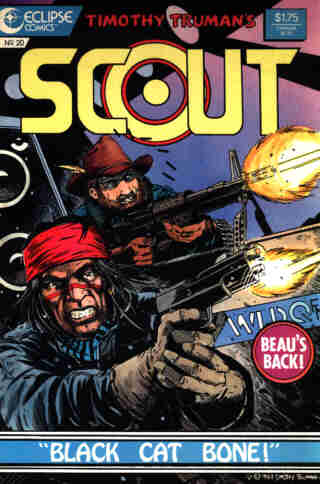
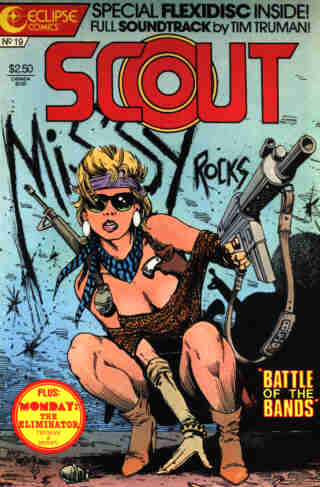
Need for the Project
Today's [tribal] youth are faced with a lack of role models, the marginalization of their beliefs and values, and the destruction of their cultural heritage. With its glorification of sex and violence, today's popular media harms rather than helps. A statement from Ron Lupe, former chairman of the White Mountain Apache tribe, paints an alarming picture of the media's effect on tribal languages:
The ever-present television, the videos, the movie tapes and CDs and all of the other media influences that come to us in the dominant English language are having a destructive effect on the survival of Native languages.
The trend is true not only for the White Mountain Apache but for people all around the world. The influence of the modern electronic media is powerful and we see it operating on our own lives, as well as the lives of our children and grandchildren.
The problem is clear. As Philip Hale, cousin to the former Navajo president, put it, "[Today's] Youth now need something to grab their attention because they have a limited attention span." One solution is also clear: a culturally relevant comic book. Give kids something they'll read, with dynamic art and action-packed stories to keep them turning pages. But present them with something more than mindless mayhem: progressive role models, thought-provoking questions, and moral lessons with no easy answers.
Unfortunately, this type of comic is rare. Though a few publishers have begun to diversify their offerings, it's difficult to find comics featuring women and minorities. Those that do often employ the same old stereotypes: blacks and Latinos as "gangstas" and Native Americans as warriors, not doctors and lawyers. They reinforce the American mindset of "might makes right" and "shoot first, ask questions later."
A comic book about Indians published in a Native language is especially appropriate for the goals espoused here. Because Indians are one of the most at-risk minorities, Felix Cohen, the father of Federal Indian law, likened them to "the miner's canary." The problems they face—prejudice, poverty, crime, health care, environmental degradation, cultural disaffection, spiritual malaise—are problems all Americans are grappling with.
Tall Oak, a Narragansett quoted in the documentary 500 Nations, calls Indians the conscience of America. "The lesson," he says, "is to realize the value of an alternative perspective. And that is why we are here. That is why the Creator allowed some of us to remain, in spite of all the attempts to destroy us."
A work that can convey this feeling to our children can be a powerful agent for change.
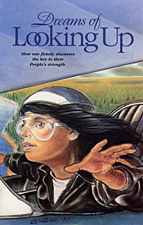

Goals and Objectives
Blue Corn Comics' target audience is readers of graphic literature, especially teens, young adults, and adults. Its comics are aimed at those who want more sophisticated, challenging stories than those in most comic books. A market for such fare exists, but most of the existing products in this category are either dark and nihilistic or escapist fantasies that are difficult for Native youth to relate to. Few touch upon current political, social, or cultural issues that affect their lives, families, and communities.
A successful series of Native-themed graphic novels will achieve some or all of the following objectives:
- Increase awareness of tribal history, cultures, and issues among the public and especially among today's youth.
- Increase reading among tribal youths, who may be averse to books and other materials not geared to their specific needs and interests.
- Increase the self-esteem and pride of tribal youths, who have few heroic models in today's culture to look up to and emulate.
- Provide opportunities for young tribal writers, artists, and business people to explore the comics medium.
- Provide publishing or copublishing opportunities for tribes, furnishing skills and jobs and helping to bolster their self-sufficiency.
- Help stem the decline of tribal languages by publishing versions in these languages.
- Return a percentage of profits to tribal coffers, to help tribes further their cultural preservation programs, particularly the development of tribal language media.
More proposal information
Publisher's biography
Project feasibilty
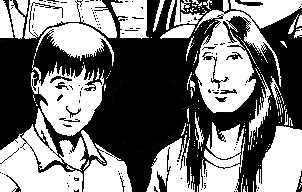
Conclusion
Please contact the publisher for further information or to initiate your own tribal language and cultural project in comic-book format.
Rob Schmidt
Publisher
PEACE PARTY
http://www.bluecorncomics.com
(310) 641-8931
Related links
The genesis of PEACE PARTY
Why write about Native Americans?
Blue Corn Comics to serve Native projects
* More opinions *
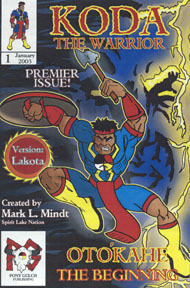
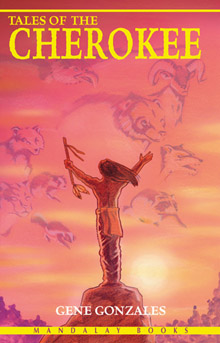
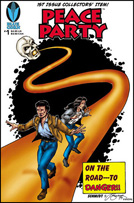
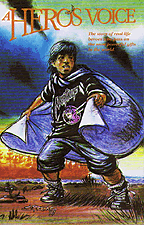 The following proposes to create stories in a comic-book format to help preserve Native languages and cultures. This proposal applies to any tribe or tribal organization. Substitute the name of a particular tribe and tribal language where it says [Tribe], [tribal], and [tribal language].
The following proposes to create stories in a comic-book format to help preserve Native languages and cultures. This proposal applies to any tribe or tribal organization. Substitute the name of a particular tribe and tribal language where it says [Tribe], [tribal], and [tribal language].






